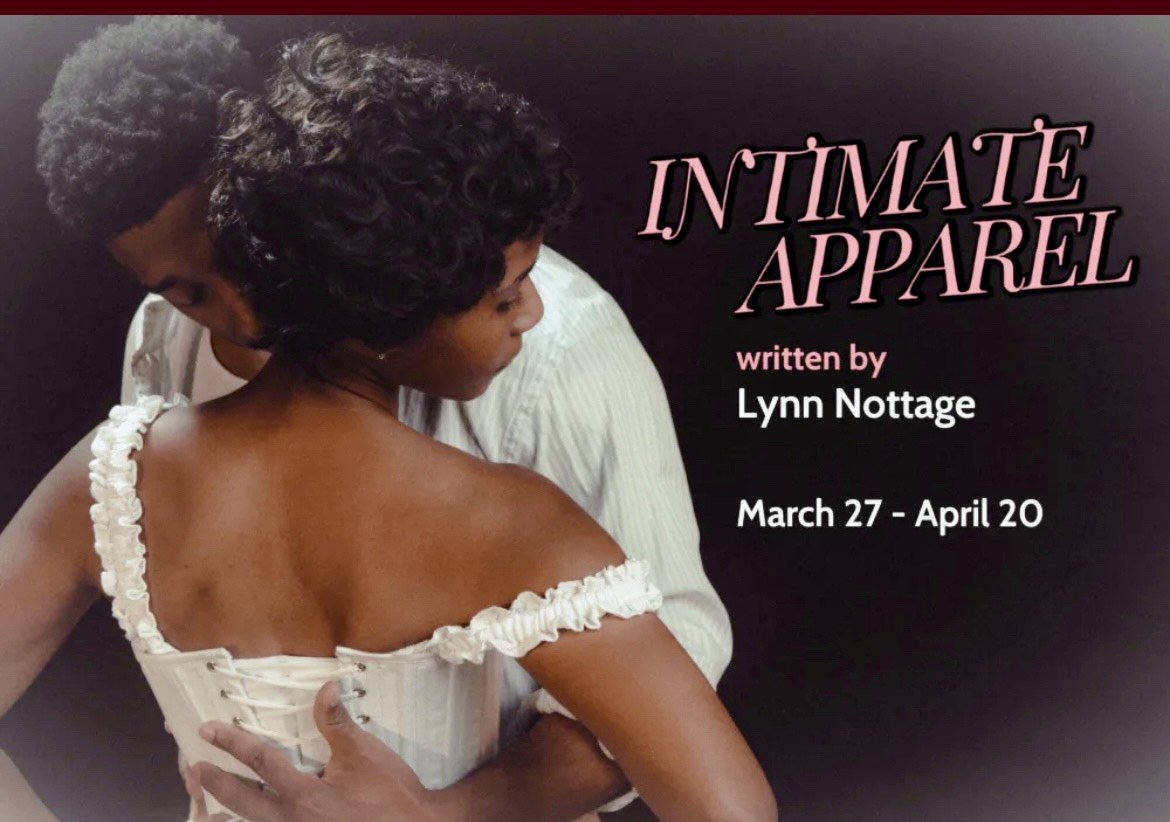Intimate Apparel
My thoughts on Intimate Apparel or life lessons for and from Esther.
Lynn Nottage’s 2003 play Intimate Apparel is the story of Esther Mills, a thirty five year old African American woman in 1905 NYC. Esther, who lives in a boarding house, is a skilled and sought after seamstress who specializes in women’s undergarments. Esther has been working diligently since her teens and saving money, which she sews into her quilt, for years. Her dream is to open a beauty parlor for Black women like herself, a place where they can “put their feet up,” be pampered, and treated with respect.
Nottage’s play explores the themes of racism, classism, the limited choices of women of the period, and the human need to connect as Esther’s small world within the big city is revealed. Director Anyika McMillan-Herod paces the show perfectly allowing time for the audience to build a growing respect for Esther as she traverses her world and for Nottage’s prodigious gift for dialogue to be admired.
Esther’s landlady at the rooming house is Mrs. Dickson played by Catherine Whiteman. Mrs. Dickson is fond of Esther and is a maternal figure in her life. Mrs. Dickson, practical and clever, lives comfortably but achieved that comfort through her own strength and intelligence. Whiteman brings all the motherly warmth to the character but gives her an underlying toughness as she advises Esther.
On the other end of the social spectrum is Esther’s client. Mrs. Van Buren, a native Southerner who is married to a wealthy NYC aristocrat. She is a complex character. She is a woman who enjoys all the privileges of the rich, but neither enjoys or feels welcome or accepted at the endless social gatherings she must attend. In addition, she is in an unhappy, abusive marriage. Mrs. Van Buren looks forward to Esther’s visits and is enthusiastic to help the illiterate Esther write letters to a suitor. Jessica D. Turner is outstanding as the lonely woman. She makes her at once a lovely patrician woman and a sadly beautiful songbird in a gilded cage. There are many different layers to this character and the skillful Turner brings out all of them.
Tayla Underwood is Mayme, a client and friend to Esther who works as a prostitute in the Tenderloin district. Mayme is also a complex character. She’s a talented musician who had dreams of becoming a concert pianist but is now resigned to the life she has. Mayme is beautiful and seemingly an opposite figure to Esther who perceives herself to be unattractive. They are girlfriends who laugh together, confide in each other, and even burst into song on occasion. Mayme also helps Esther write letters to her suitor but expresses her concerns about the situation. Underwood is a terrific Mayme. I’m not certain if weary vivacity is even possible but Underwood captures both Mayme’s tired frustration and her sassy, fun, upbeat side, and ultimately the vulnerability beneath her tough exterior.
Mr. Marks, an Orthodox Jewish Romanian immigrant, played with a spot on accent and a gentle, kind demeanor by Thomas Leverton, is a cloth merchant from whom Esther buys supplies. It becomes apparent quickly that Marks and Esther are soulmates who share more than their love of quality cloth. Leverton gives Marks a sweet awkwardness whenever Esther and he are alone, and Esther longs to touch Marks, which is forbidden by his religion. Director McMillan-Herod makes the scenes between Esther and Marks some of the most quietly beautiful and poignant in the play
George Armstrong is a Barbadian man working on the Panama Canal. George, played by Corey Pratt, known only to Esther through their correspondence, moves to NYC to marry her and Esther views him as a last chance at happiness. Pratt’s George is handsome, charming, and manipulative. George exudes masculinity, and until his true nature is revealed, his swagger and appealing Barbadian accent charm us as well as Esther. Pratt excels at this portrayal of the silver-tongued scoundrel who squanders Esther’s savings and dashes her hopes of a loving marriage.
Kimberly Nicole, constantly on stage in the part of Esther Mills, gives the gifted seamstress poise and dignity. Though the weight of the world sometimes appears to be on her small shoulders, Esther is never bowed by the pressure. Nicole, with her soft, measured delivery, makes Esther strong and intelligent. It’s as if she thinks about every word that comes out of her mouth and, except for a couple scenes, she is never loud or out of control. Nicole’s is a remarkable and deeply effective performance.
Esther’s world is rendered wonderfully by Scenic Designer Nicholas Thornburg. From the red curtained boudoir of Mrs. Van Buren to the simple room in the boarding house, each space has an authentic feeling. Emphasizing story elements, dozens of envelopes fly overhead and clothing patterns are stenciled on the arena floor. Jasmine Woods provides the excellent period and character defining costumes and Nicole Ianaccone’s lighting highlights every moment of Esther’s journey.
I enjoyed the opening night audience at Intimate Apparel who reacted with gasps of surprise at some of the unexpected events of the play. It emphasized to me how a powerful script, fine acting and direction can grip an audience. I highly recommend Lynn Nottage’s richly woven tale and its superb mounting at Theatre Three.
Photos by Jeffrey Scmidt





